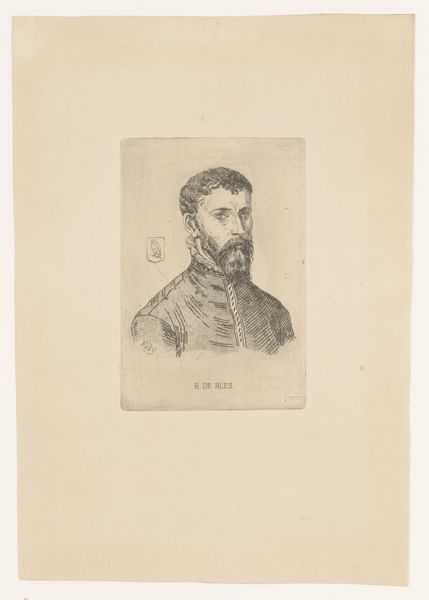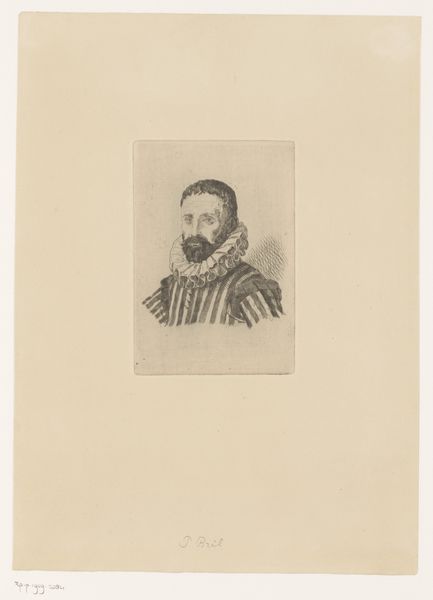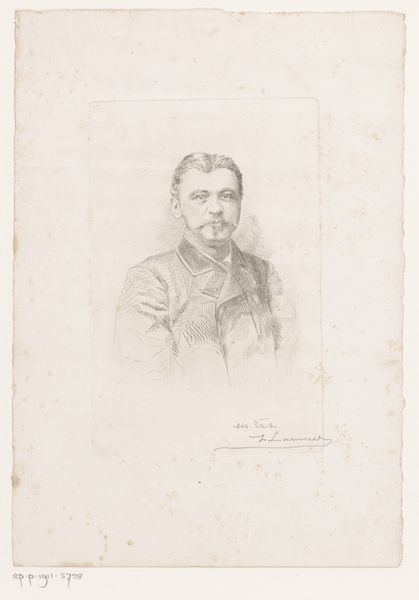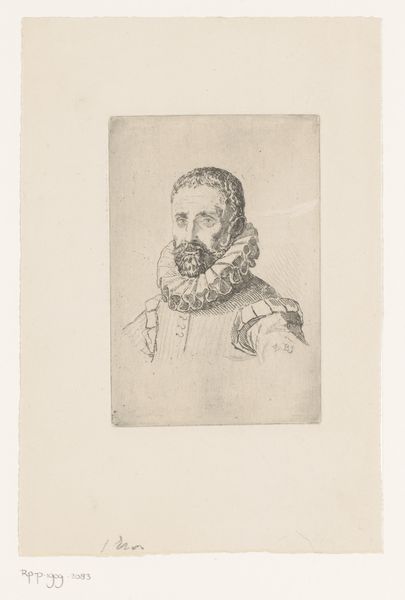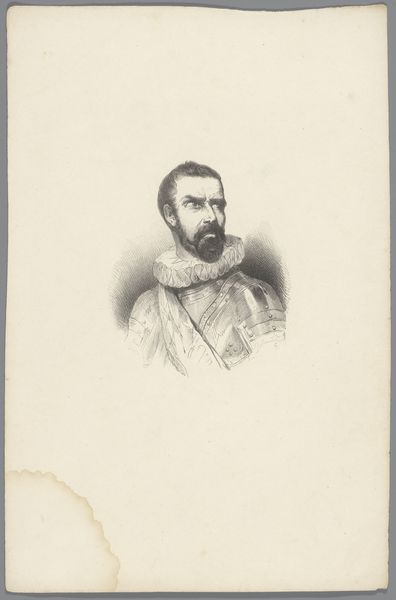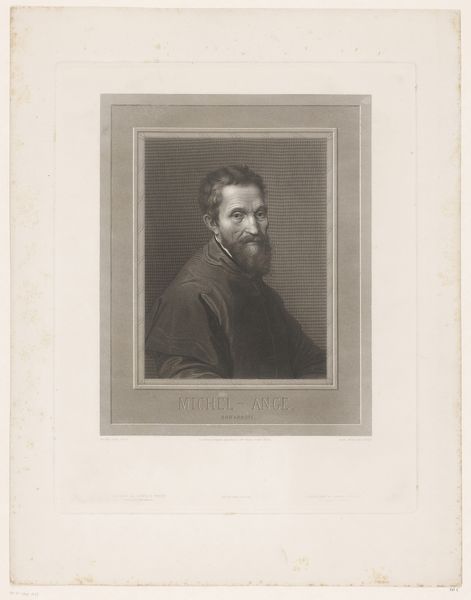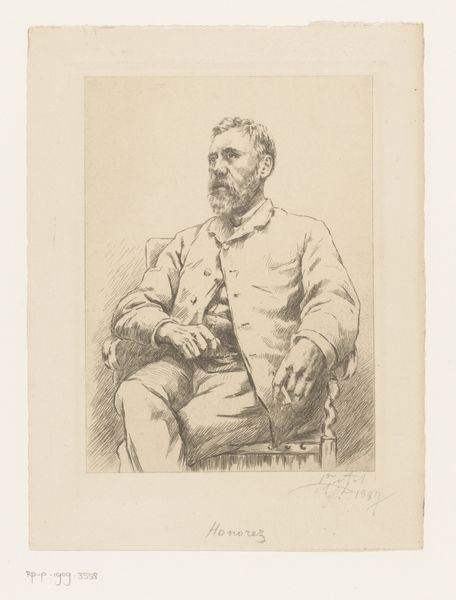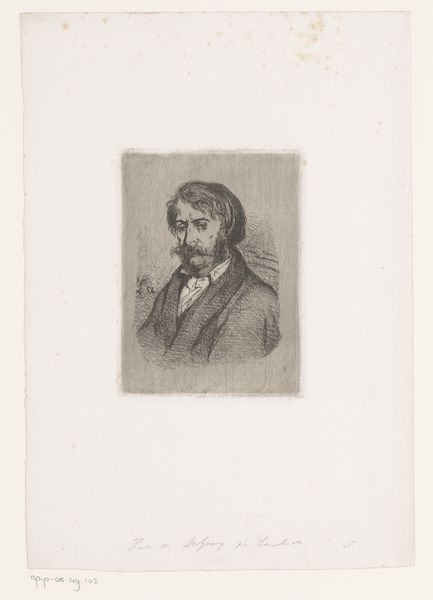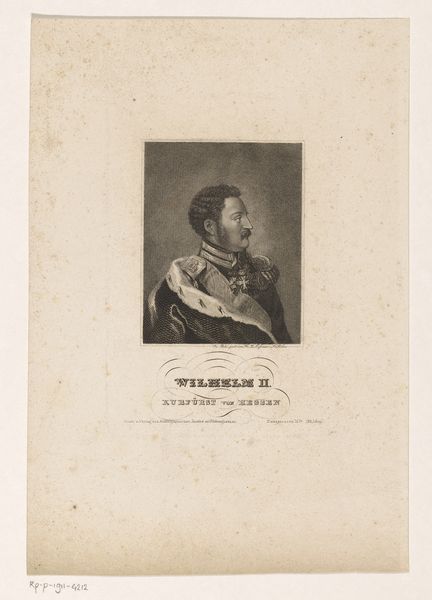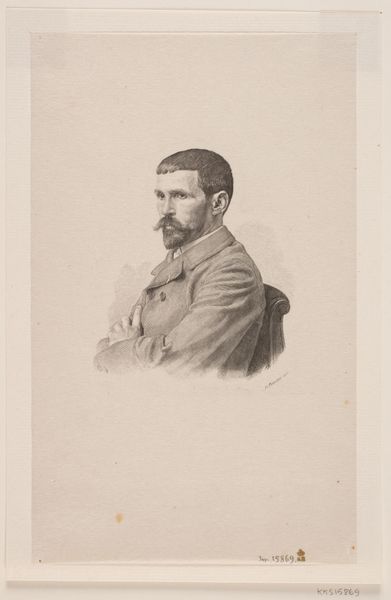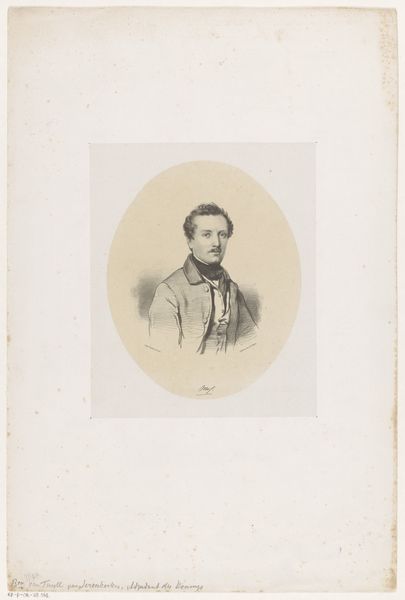
print, etching, engraving
#
portrait
# print
#
etching
#
old engraving style
#
pencil drawing
#
engraving
Dimensions: height 144 mm, width 98 mm
Copyright: Rijks Museum: Open Domain
Editor: This is Edgar Alfred Baes' "Portret van Herri met de Bles," an etching and engraving created sometime between 1847 and 1909. I'm struck by the graphic nature of the piece and the almost haunting gaze of the subject. How do you read this work? Curator: Well, immediately, I think of the fascination with the Old Masters that gripped the 19th century. The intense interest in historical figures, often romanticized, played a huge role in shaping national identities. What do you make of the choice to recreate a portrait through printmaking, as opposed to, say, painting? Editor: That's interesting. It almost feels like an attempt at democratization of art, right? Making it more accessible. Prints could be reproduced and shared more easily than an original painting. Curator: Precisely! And it reflects a specific desire to connect with the past, to claim these figures, like Herri met de Bles, for a modern audience. The circulation of these images reinforces certain cultural values, associating them with national heritage. Note also the subject's beard, that perfectly styled coif and the tiny owl on his coat-of-arms on the upper left. What is that evoking? Editor: A sense of authority? Class and social standing? I suppose those kinds of symbols were especially important in an age of increasing social mobility. Curator: Exactly. Baes isn’t just recreating an image; he's participating in a cultural conversation about history, class, and identity. Who gets remembered, and how they are remembered, becomes a political act. Editor: I never thought about a portrait having such an active role in society. Thanks for the perspective. Curator: My pleasure. Thinking about art this way enriches not only our understanding of its meaning, but its purpose.
Comments
No comments
Be the first to comment and join the conversation on the ultimate creative platform.
